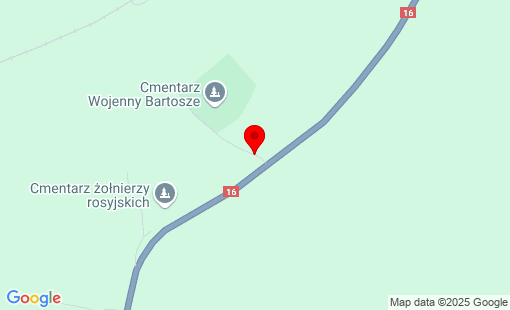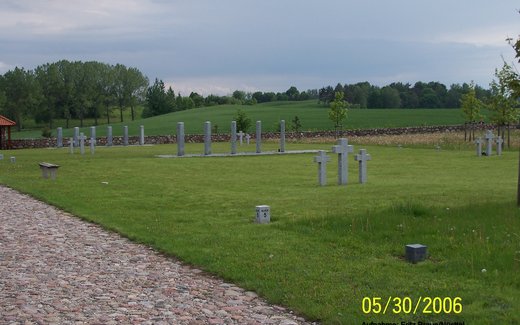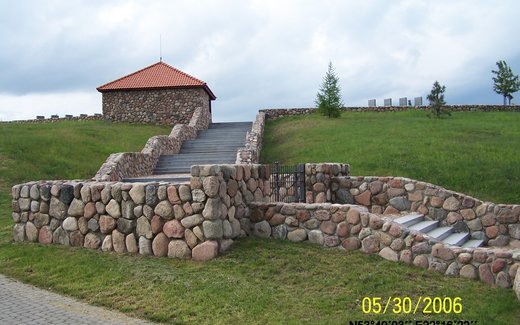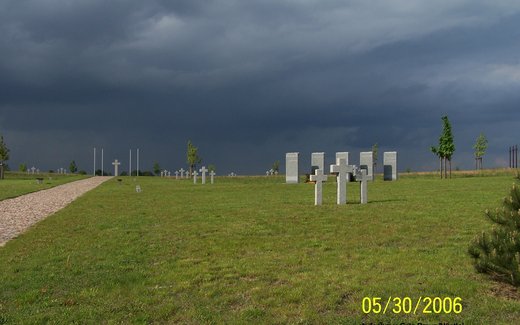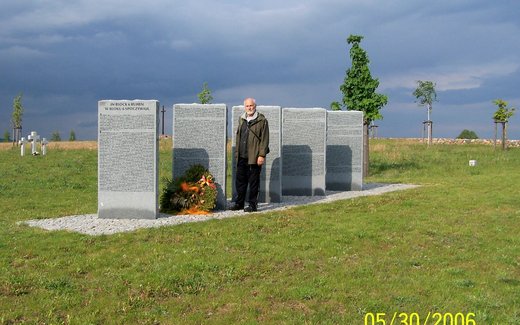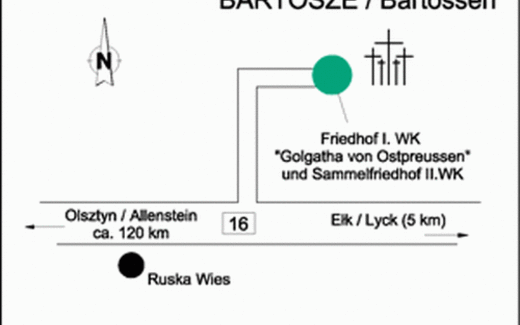The German war cemetery Bartossen (Bartosze), near the town of Lyck in the Polish voivodeship of Warmia-Masuria, is home to around 20,000 dead from the Second World War. The cemetery was dedicated on August 9, 2003.
Description of the cemetery
The Bartossen war cemetery is a collective cemetery for war dead in what is now the Polish part of East Prussia and the district of Bialystok. The approximately five-hectare site is located on a plateau and can be reached via a flight of steps. The outline and pathways of the cemetery blend harmoniously into the surrounding landscape. The natural stone used in the construction of the enclosure is reminiscent of the architecture of East Prussia. Groups of symbolic crosses mark the grave blocks of the dead of the Second World War. On the access road to the cemetery there is a "rest area" from which the view falls on three large wooden crosses visible from afar. Known as the "East Prussian Golgotha", they are the defining feature of the war cemetery.
History
The history of the Bartossen war cemetery dates back to the First World War. The first dead to be buried there were participants in the so-called Winter Battle of Masuria in February 1915, which claimed 56,000 lives on the Russian side. In contrast, there were 16,000 fallen German soldiers. There are 84 German soldiers from the First World War buried at the cemetery donated to the Volksbund. The site was repaired in the early 1990s and integrated into a new collective cemetery for soldiers who died in the Second World War in 2000. The cemetery was inaugurated on August 9, 2003. The number of dead buried there increased from an initial 15,000 to 17,900. A name book on display contains details of all soldiers who were reburied at Bartossen as well as those whose remains could no longer be recovered.
Special feature
In 2017, the "Dead of Thorn" were buried at the German war cemetery in Bartossen. During construction work in the city of Thorn, a cemetery had been discovered where, in addition to many dead Soviet prisoners of war, civilians, including women and children, who had died of disease and starvation had also been buried. On July 15, 2017, these 2,974 victims of the Second World War, the "Dead of Thorn", found their final resting place at the cemetery in Bartossen. This means that more than 20,000 dead are now buried there.
